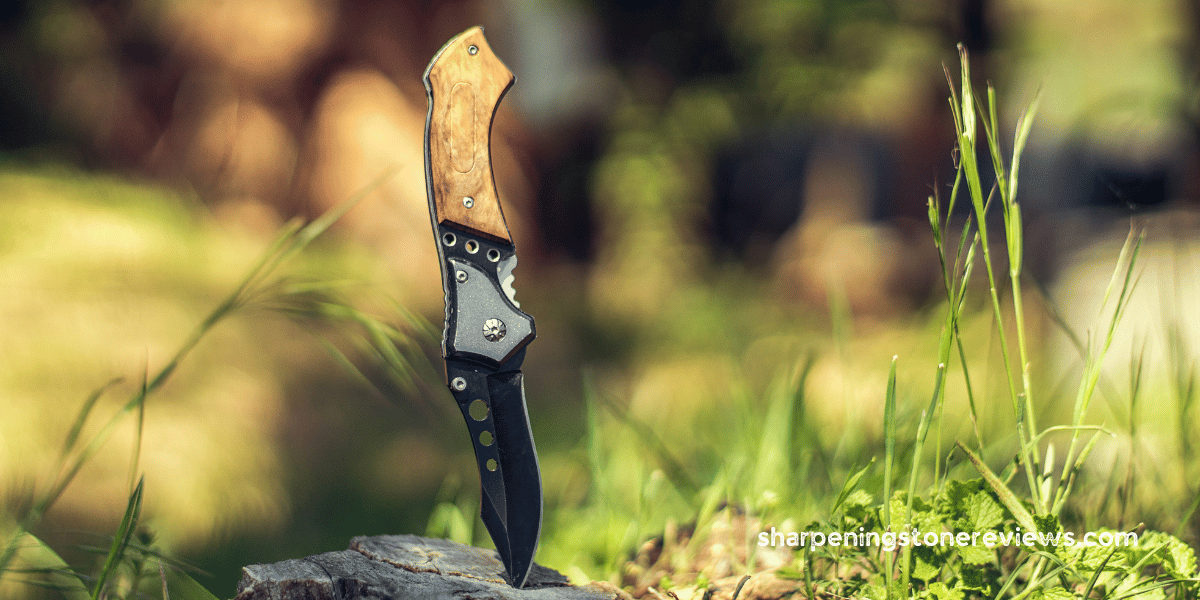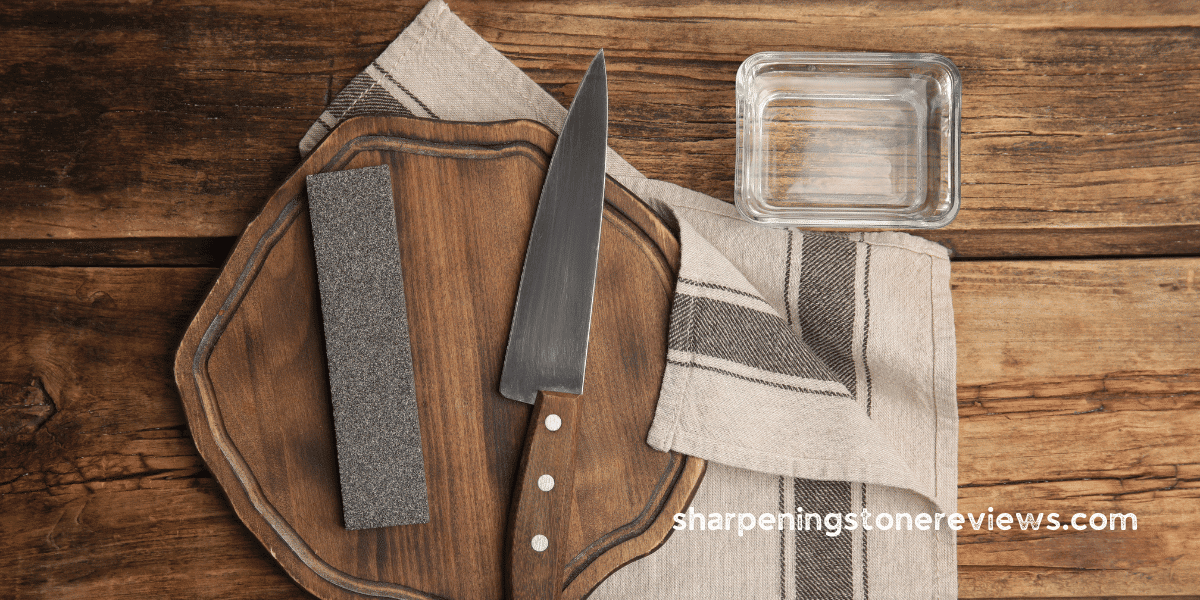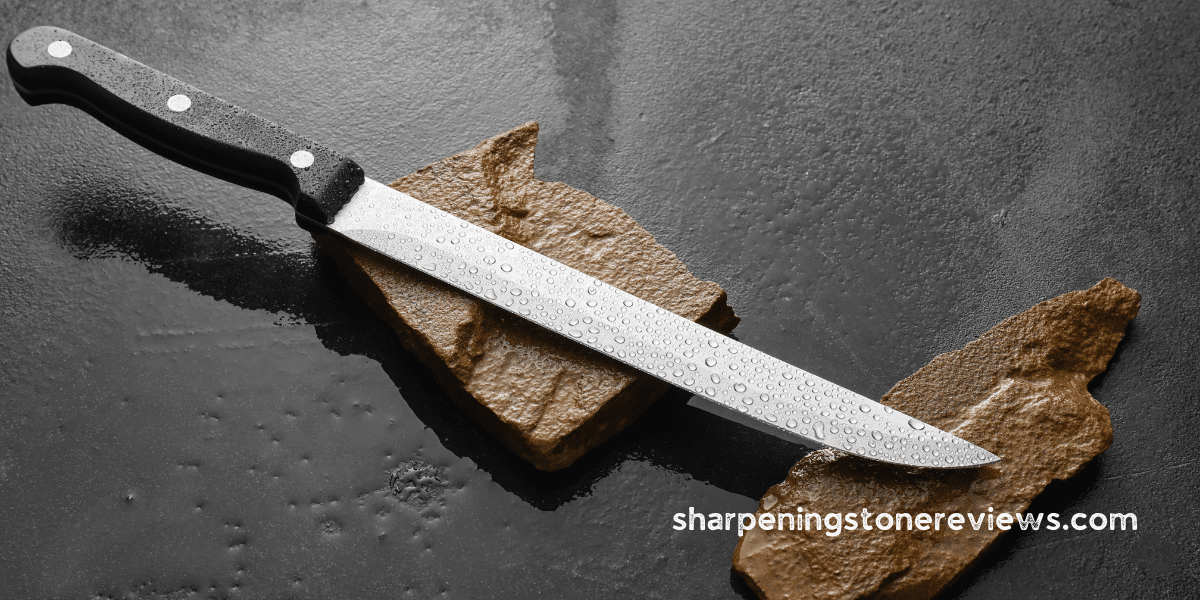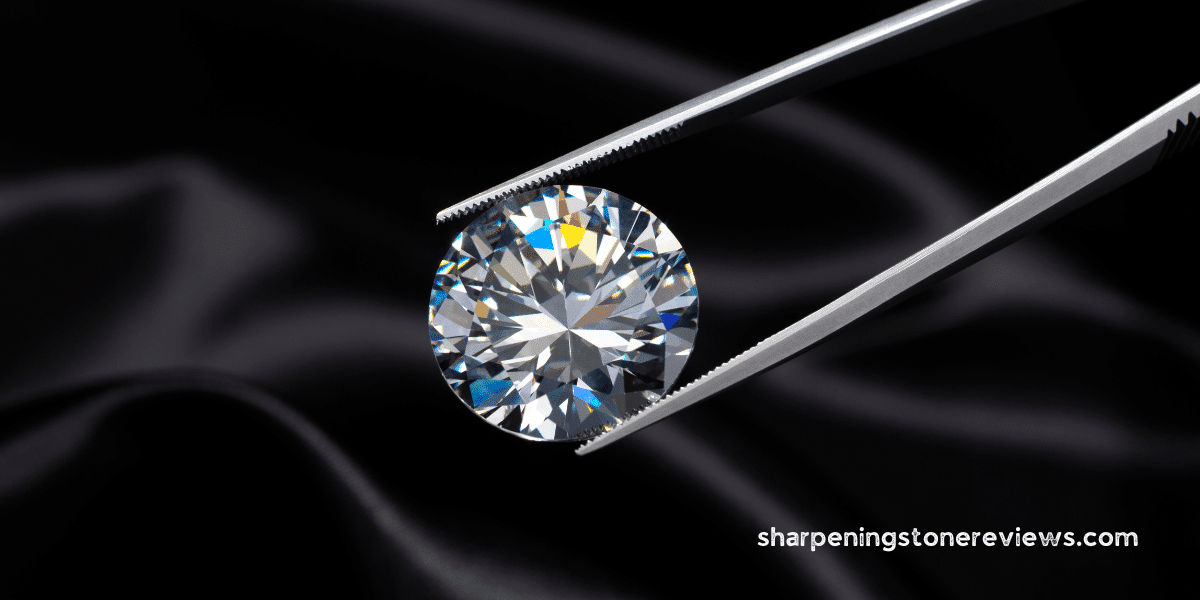A burr is a tiny, sharp protrusion of metal that forms on the edge of your knife blade when sharpened. Approximately 60% of sharpened knives have burrs on them. Burrs provide several benefits, such as improved cutting performance. However, they can also be a nuisance if they are not taken care of properly.
In this article, you’ll learn all about burrs on knives and the different techniques for preventing, sharpening, and honing them. So, to get the most out of your knives, read on to find out what a burr is and how to keep your blades in tip-top shape.
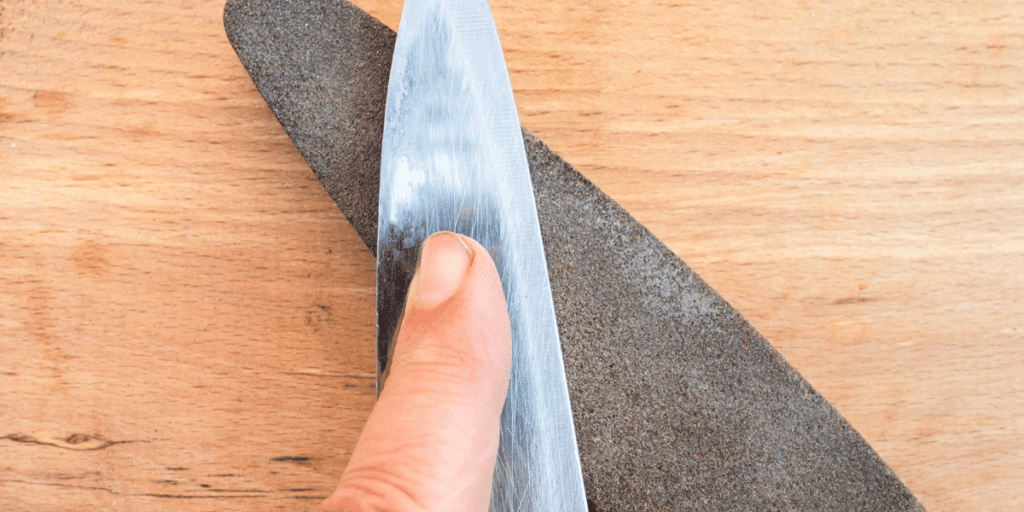
What is a Burr?
A burr is an extra layer of metal on a knife’s edge, created when you sharpen it correctly – giving you a sharper blade and a better cutting experience.
It’s essential to check for a burr to ensure that the sharpening process is done correctly. You can do this by placing your thumb on the opposite side of the blade and sliding it along it. If you feel a sliver or wire of metal, this indicates a burr.
Once you have a burr, honing is the next step. This is done by sweeping the blade down a honing rod in even strokes at a suitable angle. Maintaining a burr through the honing process is essential to sharpen the knife and avoid any damage effectively.
How Do Burrs Form?
Sharpening a blade can create a sharp edge so sharp it’ll make ya shiver! But what is a burr?
A burr is a small length of metal that forms along a knife’s edge during the sharpening process. It is a typical result of metal removal and a sign that the sharpening process was successful.
Burrs can be felt with your thumb when running along the knife blade. Depending on the burr removal technique and burr tool used, the burr can be removed from the edge.
The most common burr removal techniques are honing with a honing rod or using a finer grit sharpening surface. Honing rods and sharpening surfaces come in various sizes and grits.
Depending on the knife and the desired sharpness, the burr tools can remove the burr and achieve a smooth finish.
Types of Burrs
When sharpening a blade, it’s essential to understand the types of burrs that can form along the edge. Burrs are small pieces of metal raised from the blade’s surface due to the sharpening process.
Knives typically have two types of burrs: primary burrs and secondary burrs. The sharpening process creates primary burrs, which are usually more prominent.
Secondary burrs are created when two primary burrs meet, and their edges are pushed together. These burrs are usually finer and can be more challenging to detect.
Knowing and recognizing the different burrs is essential for proper sharpening and knife care. Both burrs can be removed by honing, but it’s necessary to be aware of their formation during sharpening.
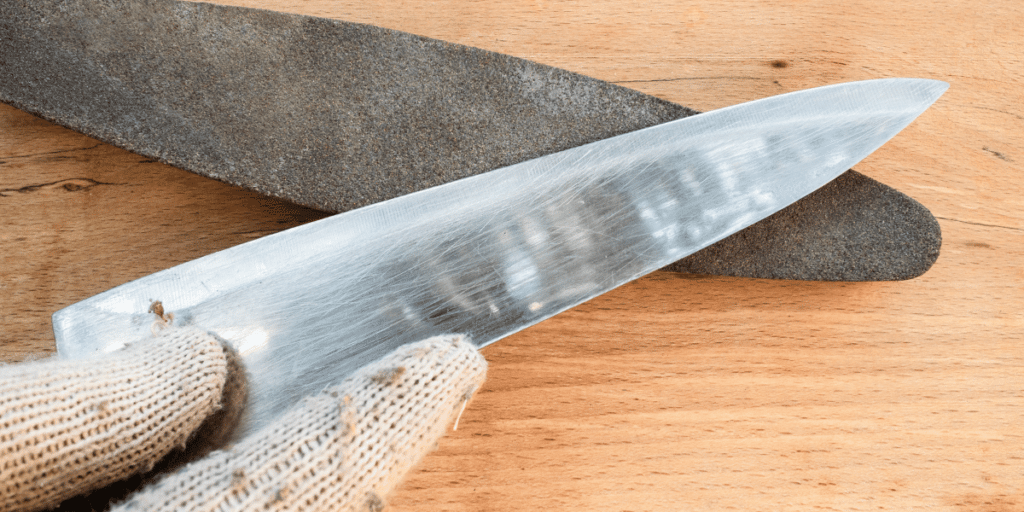
Benefits of Burrs
Having a burr on your blade can be beneficial as it indicates that you’ve effectively honed the edge and removed excess metal. Studies have found that sanded advantages can last up to three times longer than blades that haven’t been sharpened or honed.
The burr results from the sharpening process and is an integral part of the burr removal process. Burrs help create a more precise and sharper knife edge. In order to create a burr, the sharpener must constantly check the blade for burrs during the sharpening process. This ensures the burr is formed correctly and the knife edge is as sharp as possible.
It is important to note that burrs can be removed using a honing rod or stone, and it is essential to do this regularly to maintain the sharpness of the blade. The burr is a crucial part of the sharpening process, and understanding the importance of burr formation and removal is critical to achieving optimal performance from your knife.
Disadvantages of Burrs
Creating a burr can have drawbacks, leading to an uneven edge when not properly removed. Understanding the consequences of a burr before deciding to sharpen a blade is essential. Here are some of the disadvantages of burrs:
- Metal shards can be left behind on the blade, which can be painful if they come into contact with the skin.
- If the burr is left on the blade for too long, it can cause damage to the edge.
- If the burr is not removed correctly, it can lead to an uneven edge when sharpening.
- Sharpening blades with burrs can be time-consuming and require extra honing to get the desired results.
How to Remove a Burr
To remove a burr from the edge of your knife, you’ll need a honing stone or rod and apply pressure. Here’s how to do it:
- Place the honing stone on a slightly lower angle than the knife’s sharp edge.
- Apply pressure and move the stone along the edge of the blade.
- Make sure to evenly remove the burr to create a smooth, sharp edge.
- Adjust the pressure as needed in different areas to remove the burr effectively.
- Once you’re done, the burr should be gone entirely, leaving you with a friendly, sharp edge.
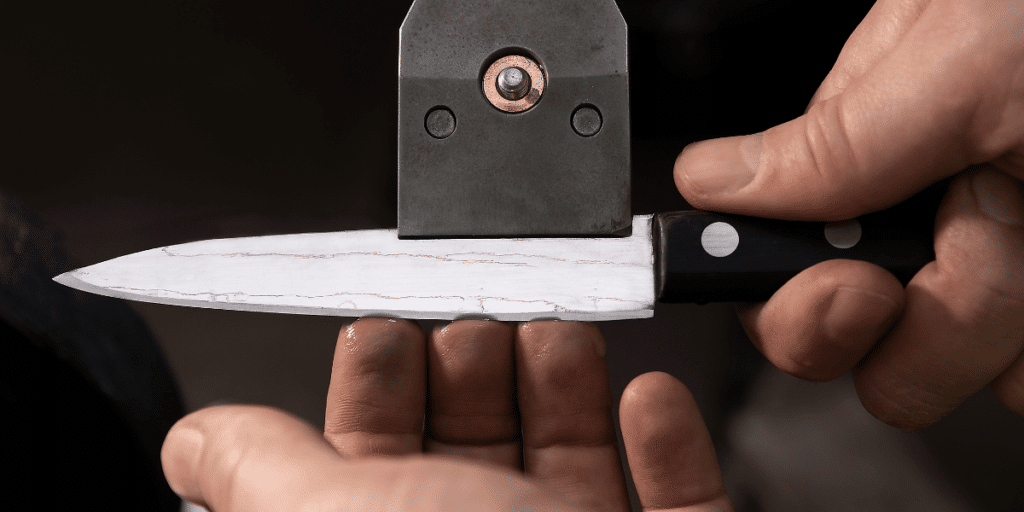
How to Prevent Burrs
Sharpening your knife to perfection doesn’t have to be a challenge; learn how to prevent burrs and enjoy a smooth, sharp edge every time! To make sure your knife never develops burrs, use the following four steps:
- Utilize a sharpening method that works for you. Pick one that fits your needs, whether it’s a honing rod, a whetstone, or an apex sharpener.
- Apply the right amount of pressure when sharpening. Too little pressure won’t create an edge, while too much pressure can cause burrs.
- Keep your sharpening angles consistent. Burrs can form if the angle changes too much.
- Inspect your blade after every sharpening session. Use a LED magnifier to check for burrs.
With the proper sharpening method and pressure, you can keep your knife burr-free and in top shape.
Follow these tips to keep your knife in perfect condition and preserve its sharpness for years.
Different Sharpening Techniques
Different sharpening techniques require different pressure levels and angles to achieve a smooth edge without burrs. Juxtaposing these two elements can help you find the perfect balance.
When sharpening a kitchen knife, you’ll need a cutting edge and a gritstone of the appropriate size. A kitchen knife sharpener is also an option if you want to use something other than a grit stone.
It is important to use the honing rod to complete the knife sharpening process. This tool helps to eliminate any burrs and produce a polished cutting edge.
By using the correct pressure and angle when sharpening, you can avoid creating burrs and ensure your knife has the perfect balance of sharpness and durability.
Different Honing Techniques
Honing is the final step of the sharpening process, and with the proper technique, you can ensure your knife achieves the perfect edge.
Honing is essential to maintain the sharpness and durability of a knife’s edge. It involves using a honing rod or a finer grit sharpening stone to smooth out the burr created on the blade’s edge.
This process should be done at a specific angle to maintain the edge contact and preserve the edge geometries. It would help if you used a combination of edge leading and trailing strokes to extend the edge life.
With the correct honing technique, you can give your knife the sharp edge it deserves.
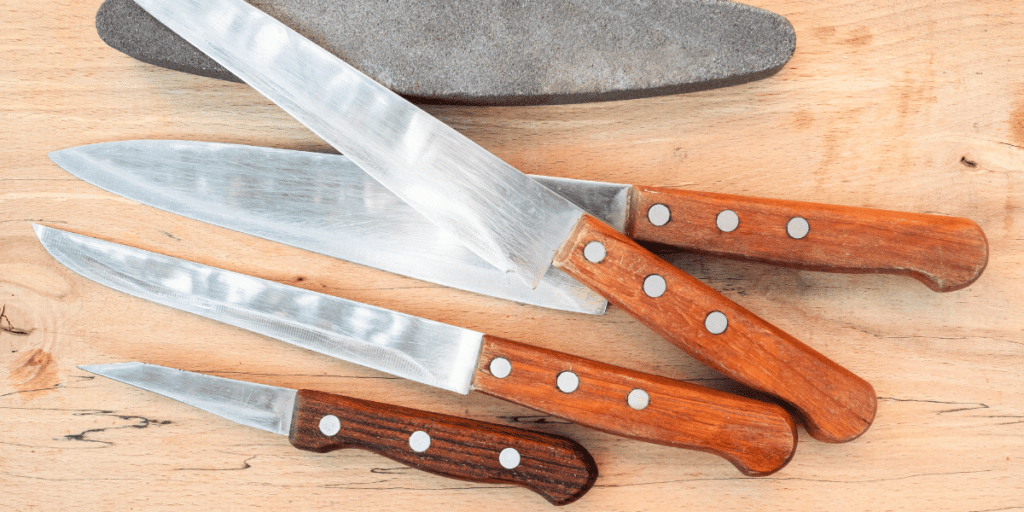
Maintaining Your Knife Blade
Now that you understand the different honing techniques let’s talk about the importance of maintaining your knife blade. Maintaining your knife blade is essential for keeping it sharp and ensuring its edge longevity. To do this, you’ll want to preserve the edge angle and remove any burrs that form. The process of forming a burr is known as plastic deformation, and it occurs when your knife sharpener causes too much metal to start on the blade’s edge. To remove the burr, use a honing rod and sweep the blade slowly and evenly downward. Doing this regularly will help you maintain the edge of your knife and keep it sharp for longer.
Frequently Asked Questions
How can I tell if I have created a burr when sharpening?
Feel for a sliver or wire of metal snagging on your thumb as you slide it across the blade – that’s your burr! It’s an exaggerated indication your sharpening is going right, so keep it up!
What is the best way to prevent burrs from forming?
Maintain a consistent sharpening angle, use a sharpening stone with a finer grit, and hone the blade regularly to help prevent burrs from forming.
What’s the difference between honing and sharpening?
Honing and sharpening can be confusing, but they are very different! Sharpening creates a new edge while honing smooths and refines the existing edge. Honing helps remove any burrs and makes a knife sharper than ever before. It’s the perfect finishing touch!
What type of sharpening technique works best for creating a burr?
Using a sharpening stone at the correct angle is the best technique for creating a burr. Hold the blade securely and slide your thumb across the edge to feel for the burr. If you don’t feel one, sharpen again and repeat the process.
How often should I sharpen or hone my knife blade?
Sharpen or hone your knife blade regularly to keep it in top condition. Use stropping or honing with a honing stone every few months to maintain its sharpness. Use a slow, steady motion and consistent angle for best results.
